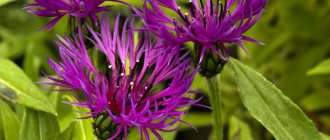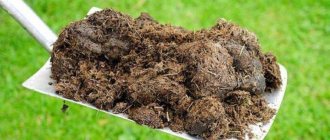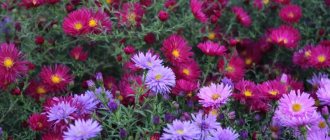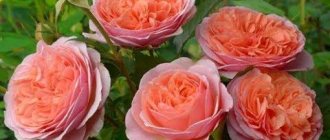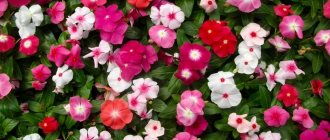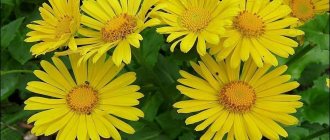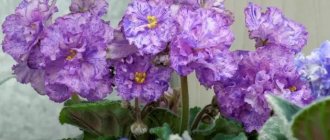One can safely call Felicia one of the most beautiful plants, which was able to win the hearts of many connoisseurs of beauty with its compact size, but very attractive data.
Felicia is a very compact annual that does not reach great heights, since the 25-30 cm mark is the conditional maximum. The plants have a basket very similar to chamomile, from which they received their second, more popular name - blue chamomile. If its shape is indeed arbitrarily associated with a chamomile, then the color scheme is clearly its own peculiarity.
Felicia has in her arsenal only two species, as well as several varieties that emphasize the originality of flower culture.
What do these flowers look like?
Chamomiles and most similar plants belong to the Asteraceae family. Its representatives are easily identified by :
- herbaceous stem;
- elongated shape of the petals;
- a basket framed with petals;
- weak aroma.
The most common type of chamomile is chamomile . Large or decorative ones are most often found in flower beds. Asters, some varieties of chrysanthemums and gatsanias also have large inflorescences.
Multi-colored daisies
The first sign by which you can distinguish them is the color of the petals. In chamomile or decorative chamomile they are white. There are similar flowers with different shades of petals .
Blue
The blue color indicates that Asters or Cineraria have grown . The latter's petals are sometimes colored half white, which creates a pleasant decorative effect.
Colored
Colored daisies, which have petals in different colors and shades, are called Anemone Blend or Anemone Corona . Echinacea varieties also have similar colors.
Yellow
Doronicum (kozulnik) is most often confused with yellow ones . You can also find Pyrethrum with lemon-colored petals, this variety is very similar to Chrysanthemum due to its double petals and small shrub shape.
Purple and lilac
Asters, Osteospermum with purple petals look very beautiful in borders and bouquets . This also includes lilac daisies; the brightness and type of shades vary depending on the variety of a particular plant species.
Reproduction of garden chamomile by dividing the bush
Chamomiles planted on the site grow well, form clumps, which remain decorative even outside of flowering and resemble green pillows. However, after a few years, the perennial needs rejuvenation, otherwise the inflorescences become smaller every year, the foliage becomes smaller and weaker.
Perennial garden daisies reproduce by seed and vegetative methods. If these beautiful flowers are already growing in the flower beds, it is enough to divide the adult curtain into several.
It is best to plant a perennial in the first half of autumn, dividing the plant into parts so that each has a part of a strong rhizome and several growing points. The soil for planting chamomile must be dug up, cleared of weeds and moistened:
- The hole is dug a little larger than the root system.
- The plant in the planting hole is placed at the same level, after straightening the rhizomes.
- The hole is filled with soil, which is compacted and watered.
Since seeds from faded baskets do not convey the characteristics of the parent plants, vegetative propagation is indispensable if you want to get young clumps of any varietal garden chamomile.
The more often the clumps are rejuvenated, the more spectacular their flowering and the larger the inflorescences. However, spring replanting may delay or cancel the appearance of buds.
Common flowers similar to daisy
Despite the similarity, each flower is unique. They differ not only in appearance, but also in life expectancy , susceptibility to disease, unique medicinal or simply useful properties. What are these flowers called and what do they look like?
Anacyclus
Anacyclus or anacilus is a perennial plant with creeping stems and large flowers. It is used to decorate alpine slides, as it is low (up to 5 cm) . The buds are dark pink, but the petals are white inside.
Helichrysum daisy flower
Helichrysum daisy flower is a perennial plant in the form of a low (up to 10 cm) and wide bush (up to 50 cm) . The leaves and stems are gray, the petals are densely packed together, white.
Doronicum
Doronicum or kosulnik is a perennial plant with bright yellow petals and core, grows from 0.3 to 1 m in height . The leaves are triangular and deep green.
Nivyanyk
Nivyanik is a perennial plant that forms a bush 0.3-0.8 m high . The blooms are large, with dense oblong white petals, the core is bright yellow. There is only one corolla on one stem, unlike chamomile.
Calendula
Calendula or marigold is an annual herbaceous plant 0.5-0.6 m high . petals are orange or deep yellow. The leaves are green in the form of an elongated oval.
Daisy
Daisy is a perennial plant most often found in ornamental crops. The flowers are full, the petals are colored pink, white, lilac, the core is soft yellow. A neat bush grows up to 20 cm tall . The leaves are oblong, located at the base of the stem.
Pyrethrum
Pyrethrum or Dolmatian, Persian chamomile is a perennial herbaceous plant 0.4-0.6 m high . The flowers are large, but there are varieties with small and full corollas. The color of the petals varies from white to burgundy.
Arctotis
Arctotis is an annual or perennial plant 0.20-0.3 m high. On a bare stem there are inflorescences with a diameter of 5-10 cm, depending on the variety . The color of the petals is white or pale yellow. The dark green leaves have a light silvery coating.
Gatsania
Gazania or gazania (African chamomile) is a perennial or annual plant. It grows up to 30 cm in height, the inflorescence is 5-9 cm in diameter . The color of the petals varies, but red and pink varieties are popular. The leaves are dark green, curly.
Gerbera
Gerbera is a perennial plant. Bare stems 0.4-0.6 cm high, hard . A rosette with long petals (up to 0.35 m) and dense, with a diameter of 0.05-0.15 m. Gerberas come in any color, with the exception of blue.
Venidium
Venidium grows up to 0.8 m. The petals are elongated with pointed ends, the rosette is not stuffed. Venidium comes in pink, white, orange and yellow . The heartwood is brown or burgundy.
Read also Why lily of the valley has become a rare plant
Cosmea
Cosmea is an annual or perennial 50-150 cm high. The stems are tender, the leaves are thin, reminiscent in shape of chamomile or dill . The petals are long, painted in one or two colors (edge effect), and are white, red, pink or purple. The inflorescence is up to 12 cm in diameter.
Coreopsis
Coreopsis is a perennial or annual plant. The height of the bush is 0.5-0.9 m, the leaves are thin . Flowers are rich shades of yellow; there are specimens with burgundy petal bases.
Osteospermum
Osteospermum is a perennial plant, but cultivated varieties are grown as annuals. It grows as a bush 0.25-1 m high, inflorescence diameter 4-10 cm . The color of the petals is white, various shades of red, purple.
Sunflower
Decorative sunflowers differ significantly from their counterparts. Depending on the variety they are :
- Miniature.
- With double and dense blooms.
- Multi-colored.
Some of them, especially the tuberous sunflower, look like a giant yellow daisy. Such plants grow up to 3 m in height , and the inflorescences are 3-5 cm in diameter.
Jerusalem artichoke
Jerusalem artichoke or earthen pear is a perennial plant with stems 0.50-4.0 m high. Flowers are yellow, their diameter is up to 10 cm .
Ursinia
Ursinia is an annual or perennial 30-60 cm high. The flowers are bright yellow, white or purple, glossy, up to 5-6 cm in diameter . Ursinia leaves are dark green in color.
Chrysanthemum
Chrysanthemum is a perennial with many flowers . The most common is the Korean chrysanthemum with thin, rigid stems, openwork light green leaves and flowers 2-5 cm in diameter. Chrysanthemum petals can be of a wide variety of shades and colors: from white to purple.
Echinacea
Echinacea is a perennial with medicinal properties . On stems with leaves there is one flower with a core protruding upward. The petals are pink or purple, oblong with pointed ends.
Erigeron
Erigeron is a perennial that grows up to 40 cm in height . Petals are elongated, rounded, color: white, pink, yellow, violet, purple. The inflorescence is 2-5 cm in diameter.
Blue daisy perennial
The plant belongs to the Asteraceae (Asteraceae) family. There are about 80 species in the genus. In nature, most species grow in Africa. These are annual and perennial herbaceous plants, subshrubs and, less commonly, shrubs.
There are two types of felicia flowers used in our gardens. In nature they are perennials, but in our country they are grown as annuals.
Felicia tenella or bergeriana is native to South Africa. It forms a bush up to 20 cm high, but grows up to 40 cm wide. The leaves are small, bluish-green. The inflorescences, about 2 cm in diameter, are blue with a yellow center.
Felicia amelloides (F. amelloides) is native to South Africa. Forms a bush up to 60 cm high, branched stems with small greenish-gray, slightly pubescent leaves. Inflorescences up to 4 cm in diameter. Petal flowers are sky blue, tubular flowers are yellow.
Both species bloom from late June - early July until late autumn. An interesting feature, the same as that of dimorphotheca: when there is insufficient lighting, the flowers close.
The plant loves sunny places. In this case, flowering will be more abundant. The soil needs light, fertile. Watering is required moderately as the soil dries. Feeding approximately once every 3-4 weeks with complex fertilizer is encouraged. To make the plant bush better, it is recommended to pinch the branches. Remove faded inflorescences.
Felicia propagates by seeds. It is necessary to sow in open ground in mid-May. Throw 3-5 seeds per hole, an interval of about 30 cm. Shoots will appear in 10-14 days. About 50 days after sowing, the seedlings will bloom. For earlier flowering, you can sow in March in seedling boxes under film. Grown seedlings dive into pots. By the end of May, plant seedlings in open ground. But more often than not, things don’t work out with seedlings, because there isn’t enough space, everything is filled with seedlings of tomatoes, peppers, eggplants, etc.
For decorative purposes, Felicia flowers can be used to form borders, in mixborders, and in rock gardens. It will look good in joint plantings with dimorphotheca, gatsaniya, phlox, and verbena. Can be grown in containers, in pots as a houseplant and taken out into the garden in the summer. In this case, in winter, flower pots should be kept at a temperature of about 15 C. In winter, moderate watering is also required. The substrate in pots consists of garden soil, peat and sand in a ratio of 2:1:1.
At home, it is possible to be affected by aphids and mites.
Join the group and you will be able to view images in full size
How to choose a flower that looks like a daisy?
Among the listed variety, every daisy lover will find a suitable option. The choice depends on the properties of the varieties, preferences in colors and plant size. Chamomile-like flowers come in different colors, heights and even types (grass, shrubs) . They are selected for any ensemble in a flowerbed and they will last for many years, delighting with bright colors and long-lasting flowering.
Blue daisies are a decoration for any garden. Few flower growers know the correct name of the flower and how to care for it; you can learn about all this below.
Cosmea
The annual herbaceous type is distinguished by spreading bushes, the height of which does not exceed 50 cm. Cosmos petals can be painted in pink, purple and burgundy tones. The diameter of the inflorescences reaches 10 cm. The annual plant can reproduce by self-sowing. The crop is grown both in open ground and at home.
There are a huge number of flowers that look like chamomile. The flower descriptions presented above will help you determine which plant is ideal for growing in your own garden.
Brief description of the culture
Blue chamomile is a plant of South African origin. Gardeners often forget the correct name of this crop - felicia. This flower belongs to the Asteraceae (Asteraceae) family. In its homeland, blue chamomile perennial grows in the wild; in Russia, this South African plant is cultivated as an annual.
Important! Suitable for rocky gardens, borders, and for planting along paths.
Blue garden chamomile looks great in flower beds with yellow flowers. Its inflorescences are used to prepare cosmetics. The essential oils included in the composition have a beneficial effect on the skin of the face.
Description: varieties and varieties of cornflower
In fact, this is not a chamomile at all. Real daisies have small inflorescences with marginal flowers, tending to zero in size, as, for example, in fragrant. But the name, which is pleasant to the ear, began to be applied to our heroine. Popovnik and nivyanik are the true names of garden chamomile.
This is a perennial plant belonging to the botanical family Asteraceae. It differs from real medicinal chamomiles:
- unbranched stems;
- whole dense leaves;
- relatively large, single inflorescences.
In nature, cornflower prefers a temperate climate. By origin it is very close to chrysanthemums, so it is not surprising that three species (common, largest and magnificent nivyaniki) are included in the list of cultivated open ground plants. The varieties of garden chamomile shown in the photo are suitable for planting in home flower beds:
- Alaska is a cold-resistant variety that blooms all summer;
- Crazy Daisy is a magnificent double variety with shiny leaves and impressive growth, up to 1 m, and requires good watering;
- May Queen - when planted in autumn and well cared for, begins to bloom in the last days of the school year;
- Princess – inflorescence diameter up to 10 cm;
Princess
- Northern Star - famous for the extraordinary whiteness of its long marginal flowers.
Advice. Tell the children that according to legend, a large daisy grows where a fallen star hit the ground. They will be happy to help you care for the plant.
Planting and care
Chamomile is best propagated by seeds. It is allowed to sow them in open ground, but it is also possible for seedlings.
To obtain seedlings, seeds are planted in March. Before this, they need to be kept in the refrigerator for about 3 weeks. Planting in open ground begins in mid-May. To do this, prepare holes in the soil and sow 3 seeds there. The holes are made at a distance of 30 cm. Shoots will appear in 14 days if the temperature is about 20°C, and flowering will begin in 6 weeks.
Important! The area for this crop should be sunny, fertile with light soil. On a summer afternoon, it is advisable to shade the plant.
Further care for this flower consists of regular watering. Dry soil is a sure sign that the plant needs moisture. During drought, watering is increased. Chamomile planted in containers should be irrigated regularly.
Read also Wild yam for fibroids
Dry stems and flowers need to be torn off. Summer residents recommend pinching the plant to stimulate the appearance of new flowers.
Important! A special feature of this plant is that cloudy weather will not allow the flowers to open; they will be closed until the sun appears.
Chamomile needs feeding once every 3 weeks. Complex formulations for ornamental crops are suitable for fertilizer. Thanks to them, the flower will be resistant to the first frosts, this will not affect its flowering. But it is important to remember that too fertile soil can stimulate the growth of green mass to the detriment of flowers.
For your information! Many gardeners grow blue chamomile as a houseplant, which they take outside in the summer.
Caring for perennial daisies
Caring for daisies will not cause you any trouble. These are low-maintenance plants. Young plants and those that have recently undergone transplantation need to be watered quite often. But mature plants only need watering during dry periods.
Bushes grown from rhizomes grow quickly and can produce up to several dozen flower stalks during the flowering period from July to August.
After 2-3 years, you can safely divide and plant large bushes. And this is even necessary, because... the plant will bloom worse due to thickening. You can do this at the end of September - beginning of October. If you planted daisies in the right place, then they do not get sick and are almost not affected by pests, unless they are attacked by aphids. In cold, excessively humid summers they can be affected by powdery mildew. To avoid this, it will be enough to treat them once or twice a season with Fundazol or Copper Oxide. After flowering has finished, cut off the flower stalks.
Feeding chamomile
This plant responds well to fertilizing. In the spring, use a high-nitrogen fertilizer, such as Hylea Vegetation. During the period of bud formation and flowering, feed them with complex fertilizer Green Guy Bright Flowerbed. The reward for timely application of fertilizing will be very large flowers and tall stems.
Preparing perennial chamomile for winter
Chamomile plants are winter-hardy and do not need winter shelter. In the fall, you can remove the remaining stems from the chamomile, and the rosette of leaves will disappear under the snow. The above-ground herbaceous part dies off. And in the spring, the plant will begin to grow rapidly again.
Diseases and pests
Among the diseases, it is worth highlighting powdery mildew. Among the pests that love this chamomile are aphids and spider mites. They can be controlled with fungicides and insecticides.
Felicia is a beautiful plant that even a novice gardener can grow. You just need to put in a minimum of effort!
He loves, he doesn’t love, he will spit, he will kiss, he will press him to the heart, he will tell him to go to hell...
Botanical name of the plant: Matricaria recutita (synonyms: Matricaria chamomilla, Chamomilla recutita, Rauschert, Chamomilla chamomilla (L.) Rydb.), Family: Asteraceae (Asteraceae, Compositae).
One day you will have a dream, It will touch you with yellow paint, And a white petal will envelop your face with dawn, tender caress... The flower from the dream and the dream calling to the flower are beautiful...
Blue chamomile (small petal or erigeron) occupies a special place in the space of the plant spirit. In a unique way, she is both obvious and mysterious. This plant has about two hundred white, pink, purple, blue, yellow petal shades.
Conventionally, it could be argued that German chamomile is the most powerful, but everything, of course, depends on the plant’s growing zone, and then chamomile (wild chamomile, chamomilla officinalis, chamomilla stripped, Hungarian chamomile) can be compared in strength to blue chamomile, for the latter is characterized by a special inner strength, its spirit, and not its color.
In Rus', the name of a given flower was determined by its properties and behavior, so it was called either a storyteller, or a belyusha, a morgun or a ruddy, and sometimes also a Roman grass.
The origin of another name for this plant, Komola, is interesting. This is a word meaning “closed in oneself, unable to tolerate duplicity and deception.” Associated with this is a special procedure for collecting the plant, for which the herbalist specially prepared himself. The most important principle of preparation was silence for three days in order to achieve a stable emotional state.
Blue daisy is, in principle, not so much a definition of the type of plant as a designation of its fundamental difference from all other daisies. Blue chamomile is a chamomile that has power. This is a plant to be venerated.
Although chamomile is a plant that grows almost everywhere, its distinctiveness is expressed as strength, or even more correctly, insight, for which the regenerative restoration process associated with chamazulene (C14H16) is responsible. Actually, the chamazulene concentrate when processing the flower determines blue chamomile as blue.
Chamazulene is a carrier of many beneficial biological properties. It is the main exponent of blue chamomile activity. It not only enriches, but ferments the plant, improving it and at the same time becoming a source of active substance. This substance improves the connective tissue of the plant. This occurs due to chamomile breathing, which can be called chamazulen breathing.
This is a type of breathing that is characterized by a certain effort to assimilate carbon dioxide. And plants such as blue yarrow and blue chamomile occupy a special place on our planet, forming within themselves a blue-violet, deeply saturated compound called chamazulene. Thus, depending on the manifested properties of breathing, chamomile can become either a simple chamomile or a chamomile that has mastered chamazulent breathing.
This etheric compound has special characteristics: it is the code of the space in which the blue chamomile ripens. German chamomile, blue chamomile (Matricaria recutita) and Roman chamomile (Anthemis nobilis) are species of daisies capable of expressing different chemotypes, the best of which is produced by the chamomile known as blue (α-bisabolol oxide B > α-bisabolol oxide A > α-bisabolol).
A chemotype is a uterine secretion of a plant capable of converting and producing an additional source of energy. This discharge has a fruity odor, more reminiscent of an apple. With its help, various priestly communities (in particular, the Celtic Druids) communicated with trees. Thus, from ancient times chamomile was considered a shamanic plant or a plant of sorcerers. It represents the energy of the sun on Earth and is considered a knowing, knowing plant.
Chamomile is a symbolic flower. It not only acts as a symbol of rebirth and everything new, but is also capable of pointing the way in the direction of the beautiful and joyful, while simultaneously hiding many secrets about our lives.
Read also: Differences between milk mushrooms and pigs
If the plant is full of energy, it can be communicated with, although Blue Chamomile crystalline essential oil is a good option here. It is difficult to find a more calibrated, insightful partner than this flower from a geometry standpoint. And in general, we can say that chamomile most vividly personifies the entire Aster family, numbering thousands of species.
Thus, this, perhaps the most popular flower in the world, not only since ancient times expresses the symbolism of various natural feelings, but in general is a symbol of all flowers, occupying a special place in the plant world and representing one of the highest forms of life in nature, producing an energetically active biological compound , the like of which few are able to generate at all. This is evidence of the real unique capabilities of the forces of nature.
Blue daisy is a ceremonial flower, in different circumstances it plays different roles for contact with the forces of nature. And, of course, this is a very romantic, sunny flower, carrying both lightness and mystery.
Love does not love
The flower has become especially popular due to the fortune-telling practice, during which the fortuneteller pulls out chamomile petals one by one with the question “loves or does not love” until the last petal remains, which will become the answer to the question. Despite all the apparent simplicity and naivety, this fortune telling also has a serious cosmic meaning: a blue chamomile accumulates the essence of the moon at night, and the sun during the day. Thus, the flower reproduces and gives people the aromas of love, so it is not difficult for it to answer the question “loves or does not love.” Chamomile is the keeper of knowledge about love and its aroma.
Loves - doesn't love - loves... The flower knows the whole truth And answers for everything with its head: Loves - doesn't love - loves...
Where chamomile grows, nature comes to life, feeding on the forces of love of this flower, its tenderness. In reality, of course, true fortune telling can only be done on the flower in which the necessary chemotypes mature, capable of actively interacting with the starry sky and storing this energy within themselves.
Blue chamomile flower
Blue chamomile is an annual plant reaching 60 centimeters in height. Usually its shoots are densely branched, and they are abundantly dotted with a large number of small flowers.
The flower can easily be confused with certain types of asters, daisies or gerberas. The main difference is that chamomile has equal length, longer and narrower bracts and pointed ray leaves. Flower baskets are multi-rowed, long-pointed, abundantly pubescent. The outer petals of the flower are usually bent, they are slightly shorter than the inner ones. The petals are bluish, lilac or violet; when dried, they curl into a tube.
Hemispherical baskets of chamomile inflorescences (4–20 mm in diameter) are located singly at the ends of the shoots, forming individual corymbose inflorescences. Flower baskets have a characteristic pleasant smell and bitter taste. They contain up to 0.85–1% essential oil, which contains more than 40 useful substances.
In the European part of Russia and in the south, chamomile can bloom very early - in March-April. Since flowering occurs unevenly, flowers can appear all spring, summer and even in autumn, until the beginning of November. At the same time, the plant is undemanding and frost-resistant. Thanks to this, and also due to the great love for open spaces, sun and sunlight, chamomile grows well not only in warm regions, but also in cold climate zones (in the Arctic, North America, Siberia) - in the tundra, on dry hillsides, along sandy river banks, on mountain rocky cliffs and slopes.
The place where chamomile grows determines not only the characteristics of its growth and development, but also the pollination process. Usually the plant is pollinated by wasps, less often by bees.
The chamomile fruit is a small oblong achene with four to five thin brownish-green ribs on the inside. The fruits are very small (length 1–2 mm, width 0.2–0.3 mm). Twenty thousand fruits weigh only 1 gram.
Doronicum, or yellow large-flowered daisy
The most common plant of the genus Doronicum in gardening is Doronicum orientalis. This is a perennial plant that blooms for one and a half to two months, starting in the second half of May.
The inflorescences of Doronicum orientalis are medium in size, and their color is yellow-golden. The marginal flowers, which are often mistakenly called petals in this type of plant, are narrow and sharp at the edges. They grow one at a time on a stem, the height of which in this variety is 30-50 cm. A characteristic feature of Doronicum eastern is the low arrangement of the leaves and their carved shape. They grow just above the ground and create a dense cover from which a single stem grows.
These bushes look like this:
Other varieties of Doronicum are also used to form flower beds. For example, if you want to get large-flowered inflorescences, plantain doronicum is planted. The height of its stems can reach 140 cm, and the diameter of the inflorescences is 12-14 cm. It also blooms in May and June.
Unlike many other garden daisies, doronicum grows best in semi-shaded areas when it is not exposed to direct sunlight. The plant loves abundant watering.
Doronicum reproduces vegetatively. It can be planted in mid or late summer, when the plant has already bloomed.
